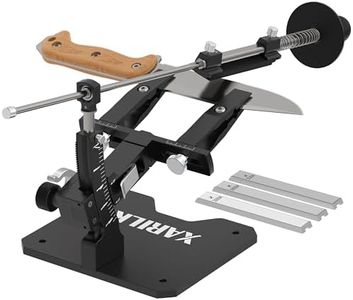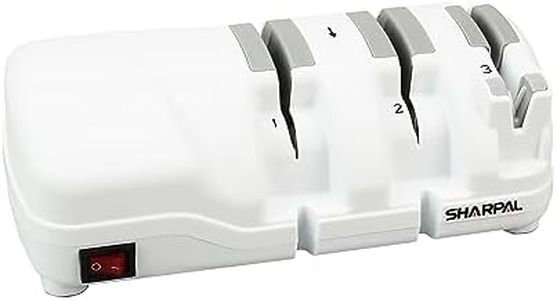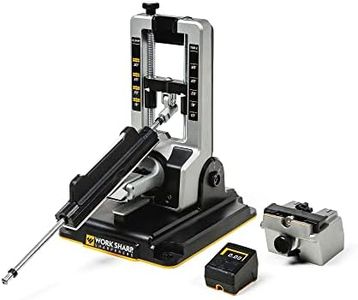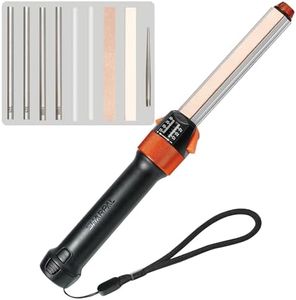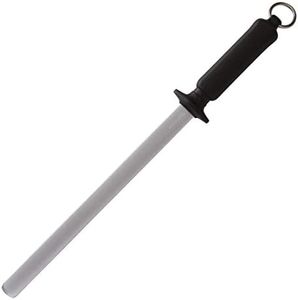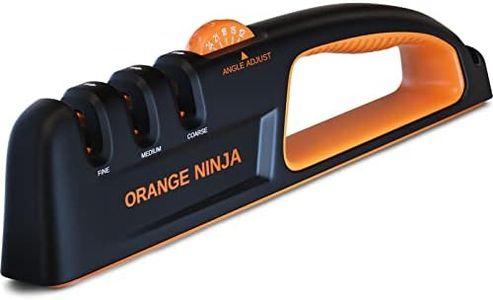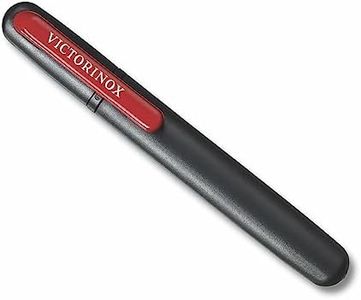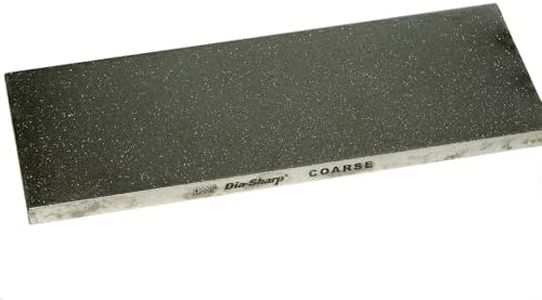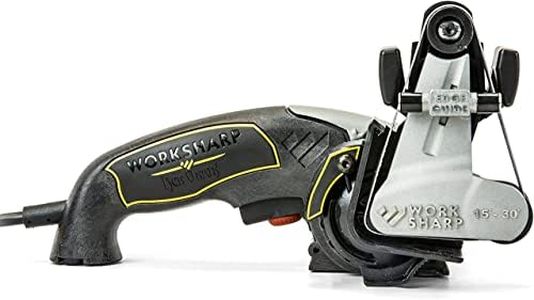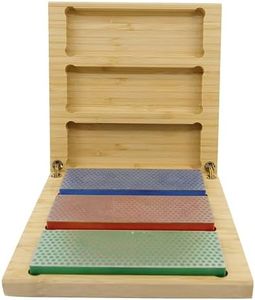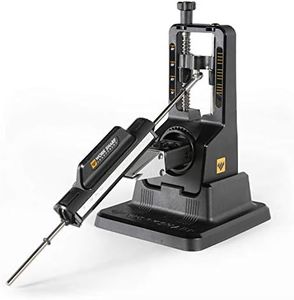We Use CookiesWe use cookies to enhance the security, performance,
functionality and for analytical and promotional activities. By continuing to browse this site you
are agreeing to our privacy policy
10 Best Hunting Knife Sharpeners
From leading brands and best sellers available on the web.Buying Guide for the Best Hunting Knife Sharpeners
When choosing a hunting knife sharpener, it's important to find a tool that maintains the edge of your blade effectively, is safe and easy to use, and suits your environment—whether that's at home or outdoors. Your aim is a sharp knife, as it makes cutting tasks safer, quicker, and more precise during hunting or outdoor activities. Understanding the main features of sharpeners helps you select the right one for your specific knives and sharpening habits.Sharpening MethodThe sharpening method refers to how the sharpener works, such as manual stones, pull-through sharpeners, or electric devices. Manual stones, like whetstones, offer control and adaptability for different edges but require more skill and time. Pull-through sharpeners are quick and easy but might remove more material from your blade or offer less precision. Electric sharpeners are fast and consistent, though they are bulkier and require electricity. Consider how much effort, control, and convenience you want: beginners or those seeking speed may prefer pull-through or electric options, while those valuing blade longevity and precision might choose a manual stone.
Abrasive MaterialAbrasive material is what actually does the sharpening and can range from diamond and ceramic to synthetic or natural stones. Diamond abrasives are very hard and cut quickly, suitable for tough or damaged blades. Ceramic provides smoother, more refined sharpening and is good for regular maintenance. Synthetic stones offer various grits and tend to be more affordable, while natural stones are traditional but can be less consistent. Choose diamond for fast, aggressive sharpening, ceramic for fine honing, and synthetic or natural stones if you enjoy a classic, hands-on approach.
Grit LevelsGrit level describes how coarse or fine the sharpener surface is, often labeled as low (coarse), mid (medium), or high (fine). Coarse grits (low numbers) quickly reshape a very dull or damaged edge but can leave scratches. Medium grits help refine the edge and remove roughness. Fine grits polish for razor sharpness and are best for regular touch-ups. If your knife is often very dull, look for sharpeners with a range of grits or at least a coarse option; for regular maintenance, fine or medium grits may suffice. Frequent field use often means you mostly need medium or fine touch-ups.
PortabilityPortability is about how easy it is to carry and use the sharpener in various locations. Small pocket sharpeners or compact folding models are light and easy to take with you in the field. Larger bench stones or plug-in electric sharpeners suit home use but aren't suited to backpacks. If you sharpen knives on hunting trips or outdoors, prioritize portability; if you mainly sharpen at home, you can opt for something larger.
Angle GuidesSome sharpeners come with built-in angle guides that help you maintain a consistent bevel as you sharpen, which is important for keeping the knife effective and safe. Without an angle guide, maintaining the right sharpening angle relies more on your skill. For beginners or those wanting repeatable results, angle guides are very useful. More experienced users may prefer sharpeners without guides for greater control over the edge style.
Safety FeaturesSafety features like non-slip bases, finger guards, and ergonomic handles make using the sharpener safer and reduce the risk of injury. Non-slip bases keep the sharpener in place during use, while finger guards protect your hands. If you’re new to sharpening or working in varied conditions such as outdoors, consider sharpeners with good safety features.

